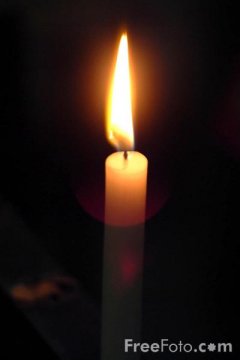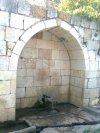
Crashed jet's black boxes located
“At midnight on January 27, the USS Ramage crew, working with Lebanese and international Navies in searching for the Ethiopian Plane, received signals emitted by the black box of the plane,” the statement said.
AFP, quoting an army spokesman, who spoke on condition of anonymity, reported that the signals were emanating from a depth of 1,300 meters.
Information Minister Tarek Mitri said signals received by rescuers have seen ships and helicopters scanning a 7-square-kilometer area of sea approximately 14 kilometers offshore.
He added that a submarine would take pictures of the surrounding area “so that we know the location and condition of the plane as well as the black box, which will consequently provide us with more details on the missing people.”
Retrieval operations would continue “until we achieve our goals,” said Mitri.
If the black boxes are located more than a kilometer below sea level, retrieving them will be out of the range of divers and could take days to haul from the seabed.
Search operations enlisted the help of The Ocean Alert, a privately owned vessel that has sonar equipment capable of reaching 2,000 meters below sea level. The ship was continuing to assist search and retrieval operations on Thursday.
Minister for Transport and Public Works Ghazi Aridi told The Daily Star that no firm time scale had been set in which to recover the flight recorders.
“[Retrieval workers] are trying to find the black box. They found the region where [it is], that is all that has happened,” he said. “Now they are trying to find exact pieces of the plane, we don’t know if [the black box] is inside or outside the plane.
“They need an additional 24 hours, maybe more or less. They will continue.”
Flight ET409 exploded into a ball of flames and plunged into the sea minutes after taking off amid violent thunderstorms early Monday morning. All 90 people aboard were feared dead.
The black boxes could provide vital clues into what befell the Boeing 737 in the moments before plunging into the sea. Lebanese officials have ruled out terrorism as a possible cause, with Defense Minister Elias Murr saying that adverse weather most likely played a part.
Aridi has said the plane undertook “a fast and strange turn” moments before disappearing from radar screens but has since warned against blaming the pilot before information is extracted from flight recorders.
Mitri called for a restraint on speculation over possible causes.
“I would to remind that our respect for the missing calls upon us all to be accurate and not hasty in publishing unconfirmed news or analyses that are not based on facts,” he told reports following a ministerial meeting in Beirut.
Varying reports have emerged since the disaster, with some media reporting that sabotage had not been officially ruled out as a possible cause.
In response to such allegations, Mitri said: “From the first day we said there was no evidence at all pointing in the direction of [a terrorist attack].”
Prime Minister Saad Hariri, following his return from talks with Egyptian President Hosni Mubarak in Cairo, called the meeting attended by defense, health, foreign, transport, information and interior ministers and state prosecutor Saeed Mirza, army commander Jean Kahwaji, ISF head Ashraf Rifi and head of the Higher Relief Council, Yahia Raad, to discuss search efforts and coordination among concerned authorities.
Also in attendance were the Head of Civil Aviation Hamdi Chawk and Head of Lebanese Red Cross, Sami Dahdah.
Mitri confirmed that 14 bodies and 20 remains of bodies had been recovered; eight were identified by Thursday night. Of these, five belonged to Ethiopian passengers, he added.
Several funerals of victims were held across Lebanon on Thursday, as remains of passengers were identified through DNA tests.
The village of Dedeh, near the northern coastal town of Batroun, witnessed the funeral of Toni Zakhem and the southern town of Zebdine saw funerals of two further victims, Haidar Marjeh and Anis Safa.
The body of the Ethiopian flight’s youngest victim, Julia al-Hajj, aged two, was received by family in the Beirut suburb of Burj al-Barajneh. Hajj had been travelling with her father, Mohammad Abdel-Hussein Hajj and mother, Rana Youssef Harakeh, both of whom are still missing.
Her tiny coffin was displayed alongside childhood Disney toys and a portrait of the girl wearing white baby clothes.
The body of Ali Ahmad Jaber was delivered to his family, to be buried in his home town of Nabatiyeh tomorrow.
Hundreds of school students gathered on the beach at Khalde, close to the crash site south of Beirut, to throw flowers into the sea in a collective show of grief.
International condolences for the victims continued to pour in, with Foreign Minister Ali al-Shami receiving a message from Spanish counterpart Miguel Angel Moratinos, expressing his country’s regret over the disaster.
Health Minister Mohammad Jawad Khalifeh, addressing reporters at Rafik Hariri University Hospital in south Beirut, confirmed that the DNA database of Lebanese victims had been completed.
He announced that a team of DNA experts from the Internal Security Forces (ISF) will arrive in Addis Ababa “in the next few days” to begin collecting blood samples from relatives of Ethiopian victims, as requested by the Lebanese judiciary.
He also announced the identification of Anna Abbs, a Russian of Lebanese descent, the National News Agency reported.
A committee tasked with investigating the crash convened on Thursday at Rafik Hariri International Airport, attended by Shawk, as well as representatives from US, French and Ethiopian delegations crash investigators. The committee discussed the ongoing coordinated retrieval operations.
An investigator from Boeing, the manufacturer which comprises all of Ethiopian Airlines’ fleet, Richard Anderson, as well as a representative from the US National Transport Safety Board arrived in Beirut Thursday to assist investigations.
The French Bureau of Investigations in Aviation Accidents sent Paul Louis Arslanian, an expert of Lebanese descent, according to NNA. – With AP, AFP






 Sereen Mageed Bou Zein Eldeen
Sereen Mageed Bou Zein Eldeen
 Sarita Salameh
Sarita Salameh
